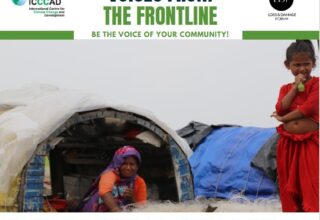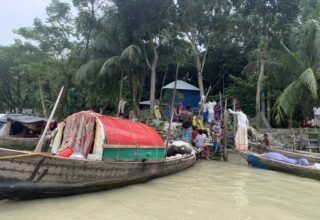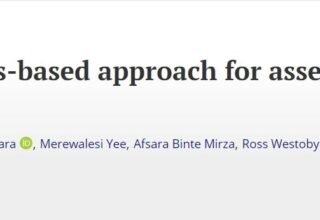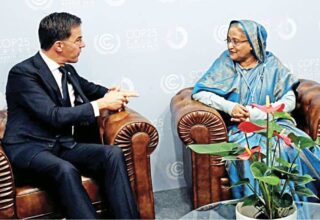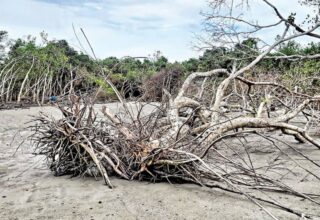Bangladesh has just hosted a big international conference on migration as the co-chair, with Germany, of the Global Forum on Migration and Development. While the focus of the Conference was mostly on the current problems related to international migration there was some discussion of the possible impacts of climate change on migration in the future.
There was also the launching of a report by the Climate Action Network South Asia (CANSA) and Action Aid called “Climate Change Knows No Borders”, which predicted 15 million climate migrants by 2050 in Bangladesh alone. Hence the paradigm under which these discussions have been held so far has been to see migration as a problem and climate change as a cause of aggravating or exacerbating the problem.
However, there is in my view, another way of looking at the nexus between climate change and migration which is to see it as a potential solution rather than just a current problem.
Let me explain what I mean.
We first need to distinguish between today’s migration, which may or may not be exacerbated by current climate impacts, from those of the next several decades, which almost certainly will be impacted by human induced climate change. Thus it is to this longer term future potential migration between now and 2030 or even 2050 that we need to start thinking, planning and investing.
If we take such a longer term perspective to the issue of linking climate change with future migration patterns then in my view there are three major pillars to be addressed simultaneously.
First of all, we need to address the issue of adaptation to climate change as distinct, at least for now, from adaptation to climate variability. What this means is that impacts of climatic events such as floods, droughts and cyclones which occur with or without climate change are already occurring but making the direct attribution to human induced climate change is not possible. However, future impacts of climate change due to warming of the earth’s atmosphere and oceans will certainly cause these events to be more frequent as well as more severe and will also cause the gradual salinisation and eventual inundation of the very low lying coastal areas of the country over many decades.
Hence the time scale involved for adapting to climate variability is now and the next few years while for climate change it is the next few decades. This means we have to enable people living in the most vulnerable areas to cope with the climate hazards in the near term while preparing to enable their children to move when the adaptation strategies can no longer keep up. So the short term adaptation is to help them manage the climate risk where they are and the longer term adaptation is to prepare them to be able to move when necessary.
Based on the longer term aspect of adaptation the second pillar of the strategy is to focus on the next generation of girls and boys who need to be educated and provided with the skills to get employment elsewhere and not have to follow their parents as farmers or fishers. This will enable the children of the people living in the vulnerable areas to find better paid employment in cities or even abroad if they are given quality skills.
This requires investment in quality education for children and youth with a focus on developing their skills to get better paid employment either within the country or abroad.
The third pillar of the strategy is to do with the pattern of urbanisation in Bangladesh. Without making any conscious decisions to change the situation the vast majority of the future migrants from rural Bangladesh will head for Dhaka which is already the world’s fastest growing mega-city and can hardly absorb another ten million people.
This means that we need to invest in other secondary cities, preferably those away from the coast, such as Rajshahi, Bogra, Pabna, etc to make them attractive for the next ten million migrants moving from rural to urban Bangladesh.
As migrants cannot be prevented from coming to Dhaka, they will need to be induced to go elsewhere by offering them better jobs, education and health opportunities in other cities. This means that future investments in urban infrastructure must be focused away from Dhaka to these secondary cities.
It may seem that what I am proposing above is unrealistic and will be unachievable but Bangladesh has overturned pessimistic predictions in the past and can certainly do so again. The essential prerequisite is for the leaders of the country to show genuine leadership and commitment and for all the other stakeholders from private sector, civil society, academia, media and international development partners to all play their respective supporting roles.
If we do that then Bangladesh in 2030 can indeed show the rest of the world how it turned the issue of climate change and migration from a problem into a solution.
Originally this article was published on Wednesday December 17, 2016 at Daily Star. The author Dr. Saleemul Huq is the director of the International Centre for Climate Change and Development (ICCCAD) at the Independent University, Bangladesh (IUB).
Email: saleemul.huq@iied.org

